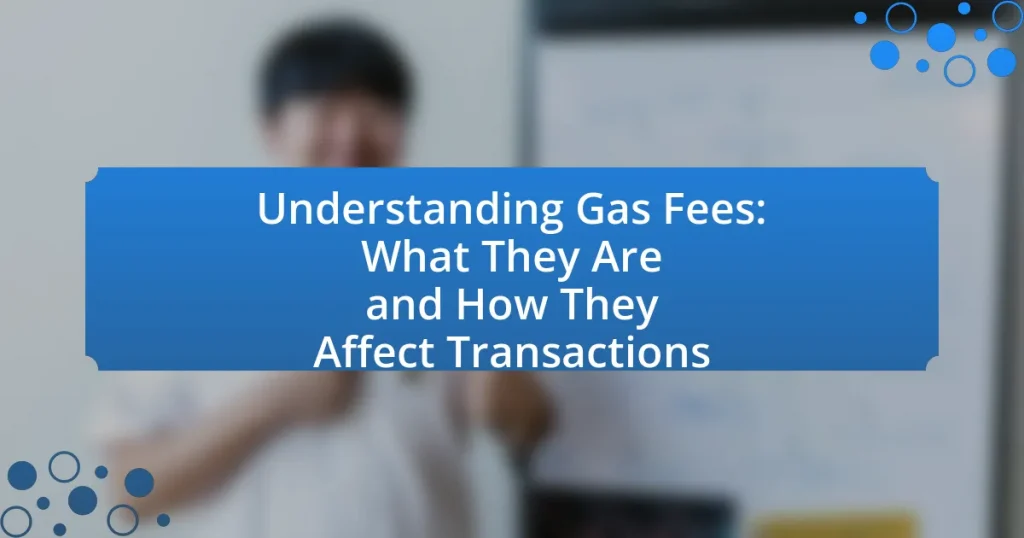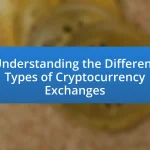Gas fees are the costs incurred for processing transactions on blockchain networks, particularly Ethereum, compensating miners or validators for their computational efforts. These fees fluctuate based on network demand, with higher fees during periods of congestion, such as popular token launches or NFT sales. The article explains how gas fees are calculated, the factors influencing their rates, and their necessity for maintaining network security and efficiency. Additionally, it discusses the impact of gas fees on transaction speed, user behavior, and the differences across various blockchain platforms, while also exploring trends and innovations aimed at reducing these costs in the future.
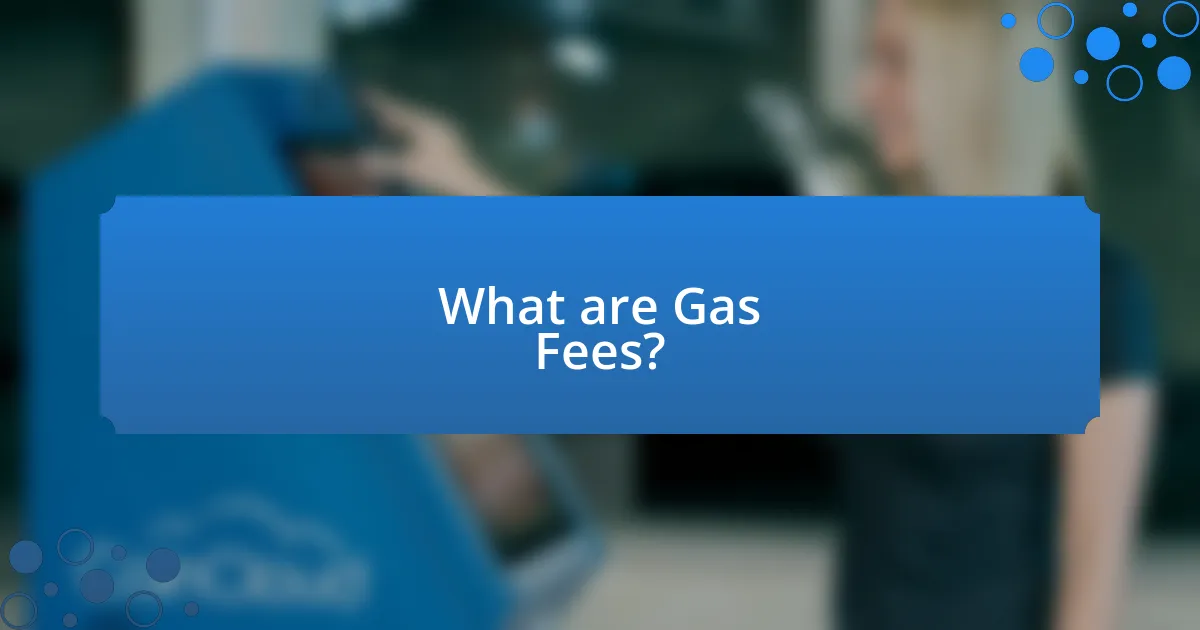
What are Gas Fees?
Gas fees are the costs associated with processing transactions on a blockchain network, primarily Ethereum. These fees compensate miners or validators for the computational energy required to validate and confirm transactions. Gas fees fluctuate based on network demand; when more users are trying to execute transactions, the fees increase due to limited processing capacity. For example, during periods of high activity, such as popular token launches or NFT sales, gas fees can rise significantly, sometimes exceeding hundreds of dollars. This dynamic pricing mechanism ensures that transactions are prioritized based on the fee offered, incentivizing miners to include higher-paying transactions in the next block.
How are Gas Fees calculated?
Gas fees are calculated based on the computational resources required to process a transaction on a blockchain network, primarily Ethereum. The calculation involves two main components: the gas price, which is determined by market demand and supply, and the gas limit, which is the maximum amount of gas a user is willing to spend on a transaction. The total gas fee is then computed by multiplying the gas price (in Gwei) by the gas limit (in units of gas). For example, if the gas price is 100 Gwei and the gas limit is 21,000 units, the total gas fee would be 0.0021 ETH. This method ensures that users pay for the computational effort needed to execute their transactions, reflecting the network’s current congestion and demand.
What factors influence the calculation of Gas Fees?
The calculation of gas fees is influenced primarily by network congestion, transaction complexity, and gas price settings. Network congestion occurs when there are many transactions waiting to be processed, leading to higher fees as users compete to have their transactions included in the next block. Transaction complexity refers to the computational resources required to execute a transaction; more complex transactions, such as those involving smart contracts, require more gas. Gas price settings are determined by users who specify how much they are willing to pay per unit of gas, which can fluctuate based on demand and supply dynamics in the network. These factors collectively determine the final gas fee that users must pay to complete their transactions on the blockchain.
How does network congestion affect Gas Fees?
Network congestion directly increases gas fees due to heightened demand for transaction processing. When many users attempt to execute transactions simultaneously, the limited capacity of the network leads to competition among users to have their transactions prioritized. This competition drives up the gas prices, as users are willing to pay higher fees to ensure their transactions are processed quickly. For instance, during peak times on the Ethereum network, gas fees have surged to over $50 per transaction, illustrating how congestion can significantly inflate costs.
Why are Gas Fees necessary for transactions?
Gas fees are necessary for transactions because they compensate miners or validators for the computational resources required to process and validate transactions on a blockchain network. These fees ensure that the network remains secure and operational by incentivizing participants to maintain the infrastructure. For example, on the Ethereum network, gas fees fluctuate based on network demand, with higher fees during peak usage times reflecting the increased competition for transaction processing. This mechanism prevents spam attacks and ensures that only legitimate transactions are prioritized, thereby maintaining the integrity and efficiency of the blockchain.
What role do Gas Fees play in blockchain networks?
Gas fees serve as transaction fees in blockchain networks, primarily compensating miners or validators for processing and validating transactions. These fees are essential for maintaining network security and incentivizing participants to include transactions in the blockchain. For instance, in Ethereum, gas fees fluctuate based on network demand, with higher fees during peak usage periods, ensuring that transactions are prioritized. This mechanism prevents spam attacks and maintains the integrity of the network by regulating the flow of transactions.
How do Gas Fees ensure network security?
Gas fees ensure network security by incentivizing miners to validate and process transactions on the blockchain. When users pay gas fees, they compensate miners for the computational resources required to maintain the network, which deters malicious activities such as spam attacks. For instance, in Ethereum, higher gas fees during peak usage periods indicate a greater demand for transaction processing, ensuring that only legitimate transactions are prioritized. This economic model creates a self-regulating mechanism that enhances the overall security and integrity of the network by making it costly for attackers to disrupt operations.
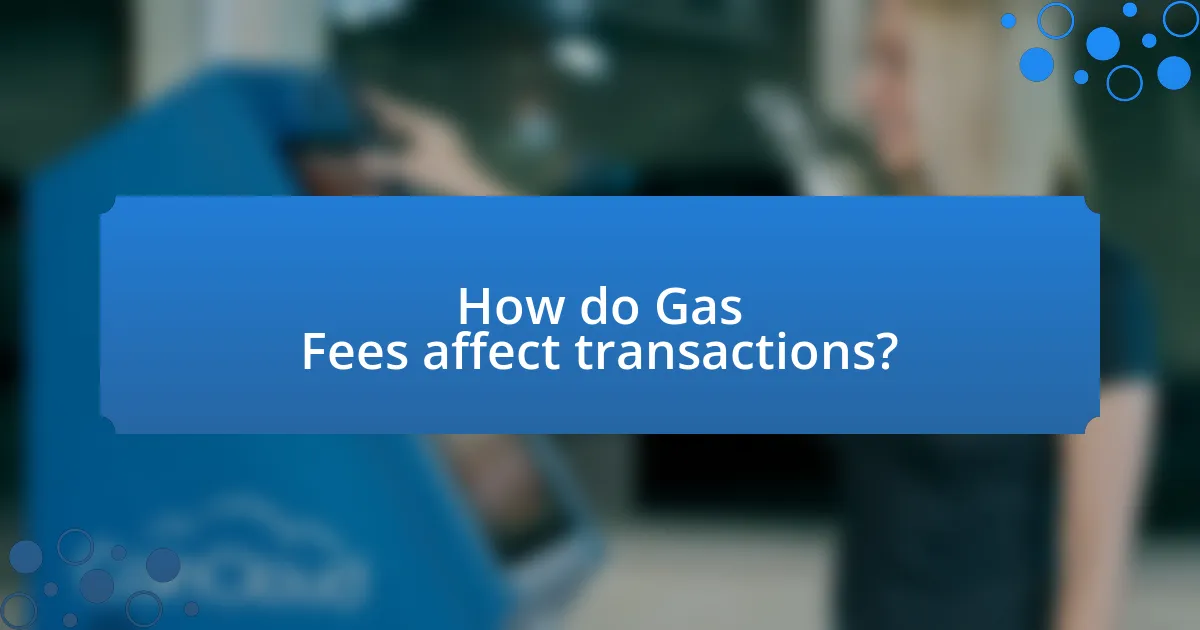
How do Gas Fees affect transactions?
Gas fees directly impact the speed and cost of transactions on blockchain networks. Higher gas fees incentivize miners to prioritize a transaction, resulting in faster confirmation times, while lower gas fees may lead to delays as miners select transactions with higher fees first. For example, during periods of high network congestion, such as during significant market events, gas fees can surge, causing users to pay more to ensure their transactions are processed promptly. This dynamic illustrates how gas fees serve as a mechanism for managing transaction throughput and prioritization within decentralized networks.
What impact do Gas Fees have on transaction speed?
Gas fees directly influence transaction speed on blockchain networks. Higher gas fees incentivize miners to prioritize transactions, leading to faster confirmations. For instance, during periods of high network congestion, users willing to pay elevated gas fees can see their transactions processed significantly quicker than those offering lower fees. This dynamic is evident in Ethereum, where gas prices fluctuate based on demand; transactions with higher fees are often included in the next block, while those with lower fees may experience delays.
How can users optimize their transactions based on Gas Fees?
Users can optimize their transactions based on gas fees by timing their transactions during periods of lower network congestion. When the Ethereum network experiences high activity, gas fees increase significantly; for example, during peak times, fees can rise to over $100, while off-peak times may see fees as low as $5. Additionally, users can set gas price limits in their wallets to avoid overpaying and utilize tools like gas trackers to monitor real-time gas prices. By strategically choosing when to transact and adjusting gas settings, users can significantly reduce their transaction costs.
What are the consequences of high Gas Fees on user behavior?
High gas fees significantly alter user behavior by discouraging transactions and prompting users to seek alternative solutions. When gas fees rise, users often delay or abandon transactions due to increased costs, leading to reduced network activity. For instance, during periods of high demand, such as the DeFi boom in 2020, Ethereum gas fees surged above $100, causing many users to opt for layer-2 solutions or other blockchains with lower fees. This shift not only affects individual user decisions but also impacts overall network congestion and the economic viability of decentralized applications.
How do Gas Fees vary across different blockchain platforms?
Gas fees vary significantly across different blockchain platforms due to factors such as network congestion, transaction complexity, and the underlying consensus mechanism. For instance, Ethereum typically experiences higher gas fees during peak usage times, with fees sometimes exceeding $50 per transaction, while platforms like Binance Smart Chain often have much lower fees, averaging around $0.10 to $1 per transaction. Additionally, newer blockchains like Solana and Avalanche offer even lower fees, often below $0.01, due to their high throughput capabilities and efficient consensus algorithms. These variations are influenced by each platform’s design, user demand, and scalability solutions implemented.
What are the differences in Gas Fees between Ethereum and other blockchains?
Gas fees on Ethereum are generally higher compared to many other blockchains due to its proof-of-work consensus mechanism and network congestion. Ethereum’s gas fees can fluctuate significantly, often exceeding $50 during peak times, while blockchains like Binance Smart Chain or Solana typically have much lower fees, often under $1. This discrepancy arises because Ethereum’s network processes fewer transactions per second, leading to higher demand and costs. For instance, during the DeFi boom in 2020, Ethereum’s average gas fee reached an all-time high of $70, while Solana maintained fees around $0.00025 per transaction, illustrating the stark contrast in transaction costs across different blockchain platforms.
How do Gas Fees influence the choice of blockchain for developers?
Gas fees significantly influence the choice of blockchain for developers by impacting transaction costs and overall project viability. High gas fees can deter developers from building on a blockchain, as they increase operational expenses and reduce profit margins. For instance, Ethereum, known for its fluctuating gas fees, has seen developers migrate to alternative blockchains like Binance Smart Chain or Solana, which offer lower transaction costs. This trend is supported by data showing that during periods of high congestion, Ethereum’s gas fees can exceed $100 per transaction, prompting developers to seek more cost-effective platforms. Thus, gas fees play a critical role in shaping the blockchain ecosystem by guiding developers toward more economically viable options.
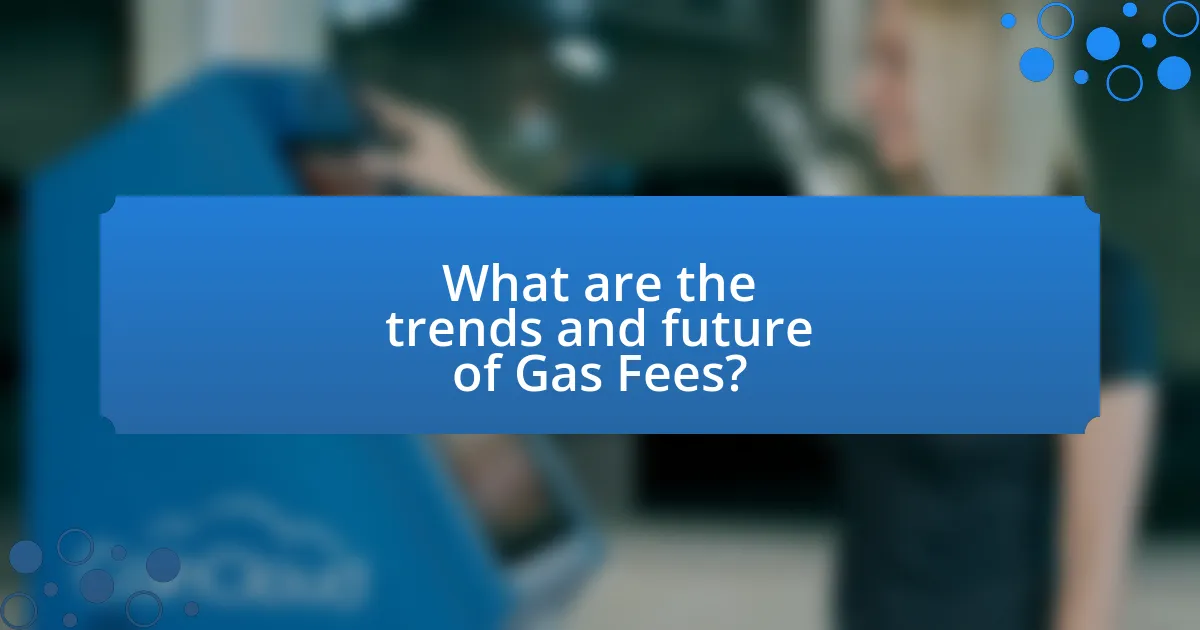
What are the trends and future of Gas Fees?
Gas fees are trending towards increased volatility and potential reduction due to advancements in blockchain technology and scaling solutions. As Ethereum transitions to proof-of-stake with Ethereum 2.0, the network aims to improve transaction throughput, which could lower gas fees. Additionally, Layer 2 solutions like Optimistic Rollups and zk-Rollups are being developed to alleviate congestion on the main chain, further contributing to reduced fees. Historical data shows that gas fees spiked during periods of high network activity, such as the DeFi boom in 2020, indicating that demand directly influences costs. Future projections suggest that as more efficient technologies are adopted, gas fees may stabilize or decrease, making transactions more affordable for users.
How have Gas Fees changed over time?
Gas fees have fluctuated significantly over time, primarily influenced by network demand and transaction volume. For instance, during periods of high activity, such as the DeFi boom in 2020 and the NFT surge in 2021, gas fees surged to unprecedented levels, sometimes exceeding $100 for a single transaction on the Ethereum network. Conversely, during quieter periods, gas fees have dropped to as low as a few cents. Historical data shows that the average gas price in Gwei, a unit of measure for gas fees, reached an all-time high of around 1,200 Gwei in May 2021, while it averaged around 20 Gwei in early 2020. This volatility illustrates how gas fees are directly correlated with the overall usage of the blockchain, reflecting the dynamic nature of cryptocurrency transactions.
What historical events have influenced Gas Fee fluctuations?
Historical events that have influenced gas fee fluctuations include the Ethereum network’s congestion during the CryptoKitties craze in late 2017, which led to transaction fees skyrocketing to over $20. Additionally, the DeFi boom in 2020 caused significant spikes in gas fees as users rushed to participate in yield farming and liquidity mining, with fees reaching an average of $15 to $30 per transaction. Furthermore, the Ethereum Improvement Proposal (EIP) 1559 implemented in August 2021 introduced a base fee mechanism that aimed to stabilize gas fees but also resulted in temporary fluctuations as the market adjusted. These events demonstrate how network demand and protocol changes directly impact gas fees.
How do market trends affect future Gas Fees?
Market trends significantly influence future gas fees by determining the supply and demand dynamics within blockchain networks. When demand for transactions increases, such as during market surges or popular events, gas fees typically rise due to network congestion. For instance, during the DeFi boom in 2020, Ethereum gas fees spiked as more users engaged with decentralized applications, illustrating how heightened activity correlates with increased fees. Conversely, when market activity slows, gas fees tend to decrease as fewer transactions compete for network resources. Historical data shows that fluctuations in cryptocurrency prices and trading volumes directly impact gas fee trends, reinforcing the relationship between market conditions and transaction costs.
What innovations are being developed to reduce Gas Fees?
Innovations being developed to reduce gas fees include Layer 2 scaling solutions, such as Optimistic Rollups and zk-Rollups, which process transactions off the main blockchain to alleviate congestion. These technologies enable faster and cheaper transactions by bundling multiple transactions into a single one, significantly lowering the cost per transaction. For instance, Ethereum’s implementation of these solutions has shown a reduction in gas fees by up to 90% during peak times, as evidenced by various network performance analyses. Additionally, the introduction of EIP-1559 has restructured the fee market by implementing a base fee mechanism, which adjusts dynamically based on network demand, further contributing to more predictable and often lower gas fees.
How do Layer 2 solutions impact Gas Fees?
Layer 2 solutions significantly reduce gas fees by processing transactions off the main blockchain, thereby alleviating congestion. These solutions, such as Optimistic Rollups and zk-Rollups, bundle multiple transactions into a single one before submitting it to the main chain, which minimizes the overall gas cost per transaction. For instance, Ethereum’s Layer 2 solutions have demonstrated reductions in gas fees by up to 90% during peak times, as they allow for higher throughput and lower demand on the main network. This efficiency not only makes transactions cheaper but also enhances the scalability of blockchain networks.
What role does Ethereum 2.0 play in the future of Gas Fees?
Ethereum 2.0 is expected to significantly reduce gas fees through its transition to a proof-of-stake consensus mechanism and the implementation of shard chains. This upgrade aims to enhance the network’s scalability, allowing for more transactions to be processed simultaneously, which can alleviate congestion and lower transaction costs. Historical data indicates that Ethereum’s gas fees have surged during peak usage times, often exceeding $50 per transaction. By increasing the network’s capacity, Ethereum 2.0 can help stabilize and potentially decrease these fees, making transactions more affordable for users.
What are some best practices for managing Gas Fees?
To manage gas fees effectively, users should monitor network congestion and choose optimal transaction times. During periods of low activity, gas fees tend to decrease, allowing for cost-effective transactions. Additionally, users can set gas limits and use tools like gas trackers to estimate fees accurately. According to data from Ethereum Gas Station, transactions can vary significantly in cost based on network demand, highlighting the importance of timing and informed decision-making.
